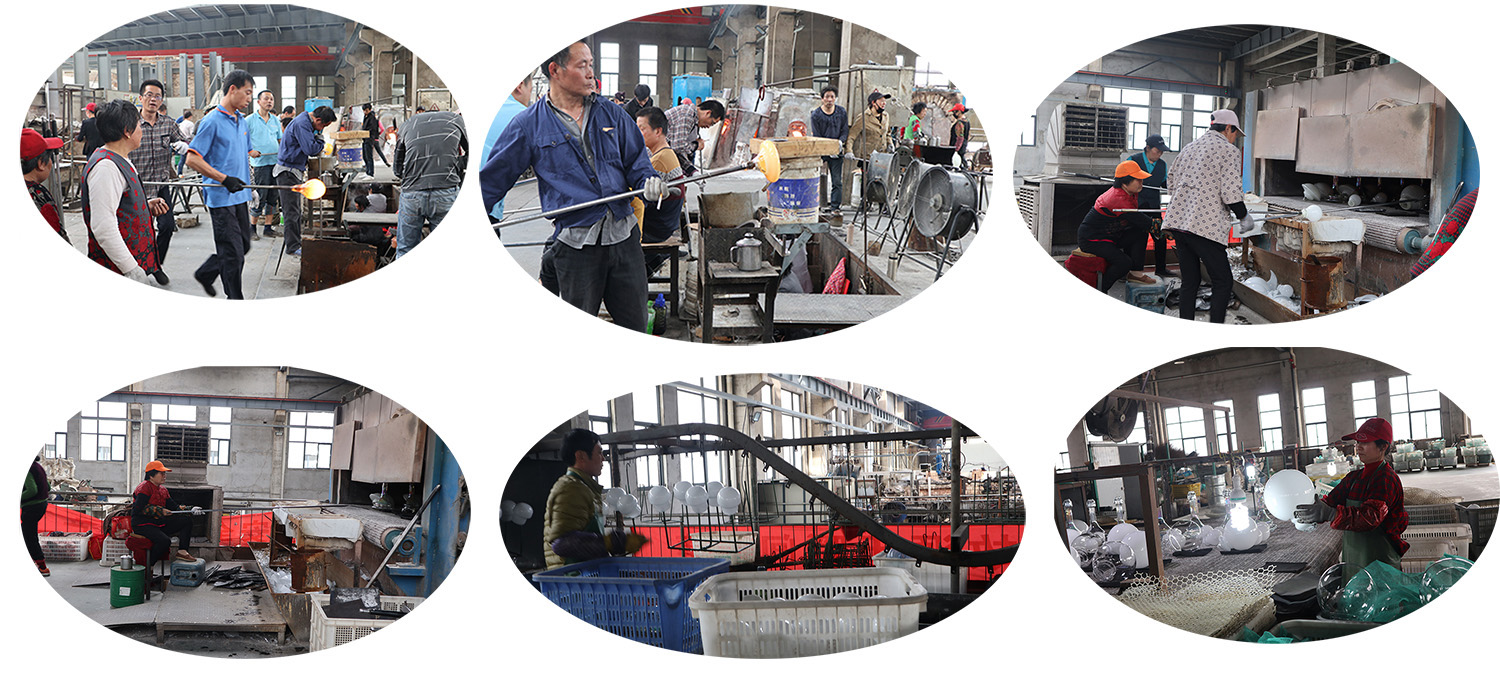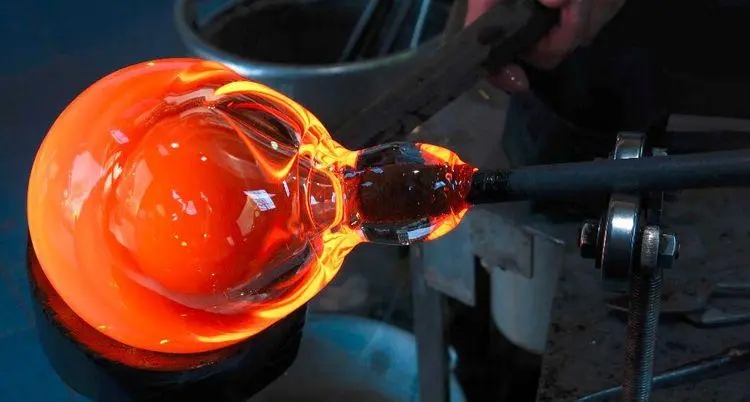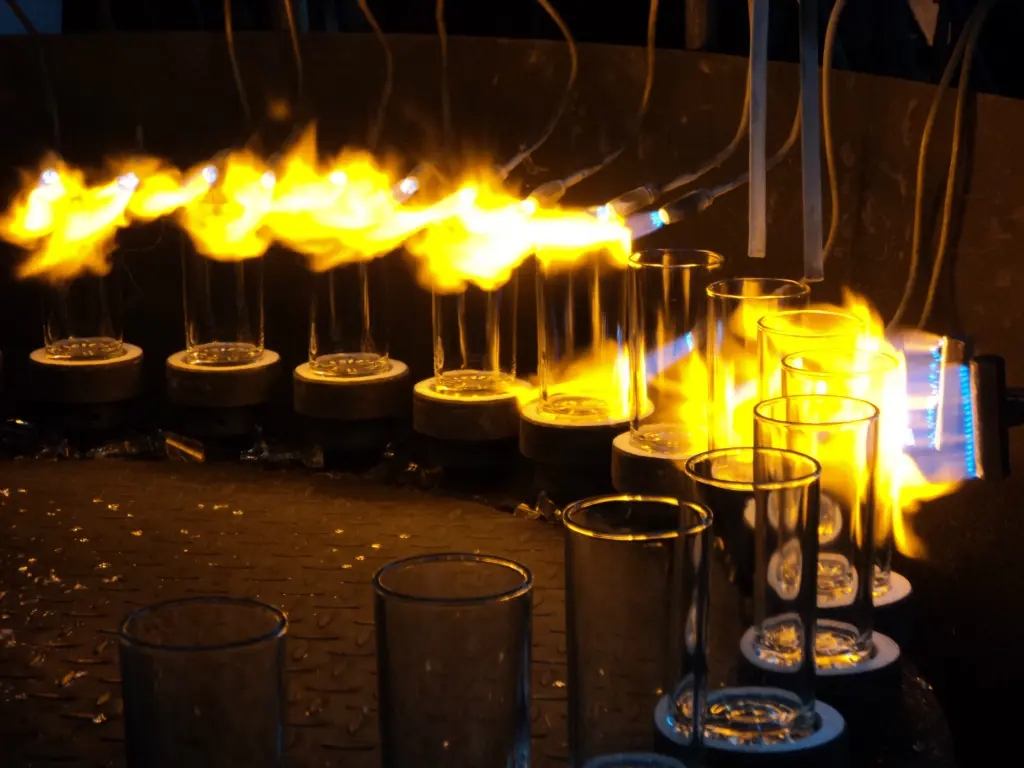How to make glass, and what are the manufacturing processes and processes of glass Cn editor introduces the following methods.
1. Batching: according to the designed material list, weigh various raw materials and mix them evenly in a mixer. The main raw materials of glass are: quartz sand, limestone, feldspar, soda ash, boric acid, etc.
2. Melting, the prepared raw materials are heated at high temperature to form a uniform bubble free liquid glass. This is a very complex physical and chemical reaction process. The melting of glass is carried out in the furnace. There are mainly two types of Furnaces: one is crucible kiln, in which the frit is put in the crucible and heated outside the crucible. Only one crucible can be placed in a small crucible kiln, and up to 20 crucibles can be placed in a large crucible kiln. Crucible kiln is gap production, and now only optical glass and color glass are produced in crucible kiln. The other is the tank kiln, in which the frit is melted in the furnace pool and heated by open fire on the upper part of the glass liquid level. The melting temperature of glass is mostly 1300~1600 ゜ C. Most of them are heated by flame, and a few are heated by electric current, which is called electric melting furnace. Now, tank kilns are produced continuously. Small tank kilns can be several meters, and large ones can be as large as more than 400 meters.

3. Forming is the transformation of molten glass into solid products with fixed shapes. Forming can only be carried out within a certain temperature range, which is a cooling process. Glass first changes from viscous liquid to plastic state, and then into brittle solid state. Forming methods can be divided into manual forming and mechanical forming.

A. Artificial forming. There are also (1) blowing, using a nickel chromium alloy blow pipe, picking up a ball of glass and blowing while turning in the mold. It is mainly used to form glass bubbles, bottles, balls (for eyeglass), etc. (2) Drawing: after blowing into bubbles, another worker sticks it with the top plate. The two people blow while pulling, which is mainly used to make glass tubes or rods. (3) Press, pick up a piece of glass, cut it with scissors to make it fall into the concave mold, and then press it with a punch. It is mainly used to form cups, plates, etc. (4) Free forming, picking materials and directly making handicrafts with pliers, scissors, tweezers and other tools.

B. Mechanical forming. Because of the high labor intensity, high temperature and poor conditions of artificial forming, most of them have been replaced by mechanical forming except free forming. In addition to pressing, blowing and drawing, mechanical forming also has (1) calendering method, which is used to produce thick flat glass, engraved glass, wire glass, etc. (2) Casting method to produce optical glass.

C. (3) Centrifugal casting method is used to manufacture large diameter glass tubes, utensils and large capacity reaction pots. This is to inject the glass melt into the high-speed rotating mold. Due to the centrifugal force, the glass clings to the mold wall, and the rotation continues until the glass hardens. (4) Sintering method is used to produce foam glass. It is to add foaming agent to the glass powder and heat it in a covered metal mold. Many closed bubbles are formed in the heating process of the glass, which is a good heat insulation and sound insulation material. In addition, the forming of flat glass includes vertical drawing method, flat drawing method and float method. Float method is a method that allows liquid glass to float on the surface of molten metal (TIN) to form flat glass. Its main advantages are high glass quality (flat and bright), fast drawing speed and large output.
4. After annealing, the glass undergoes intense temperature changes and shape changes during forming, which leaves thermal stress in the glass. This thermal stress will reduce the strength and thermal stability of glass products. If it is cooled directly, it is likely to rupture by itself during cooling or later storage, transportation and use (commonly known as the cold explosion of glass). In order to eliminate cold explosion, glass products must be annealed after forming. Annealing is to keep heat in a certain temperature range or slow down for a period of time to eliminate or reduce the thermal stress in the glass to the allowable value.
In addition, some glass products can be hardened in order to increase their strength. Including: physical hardening (quenching), used for thicker glasses, tabletop glasses, car windscreens, etc; And chemical stiffening (ion exchange), used for watch cover glass, aviation glass, etc. The principle of stiffening is to produce compressive stress on the surface layer of glass to increase its strength.
Post time: Jul-12-2022





